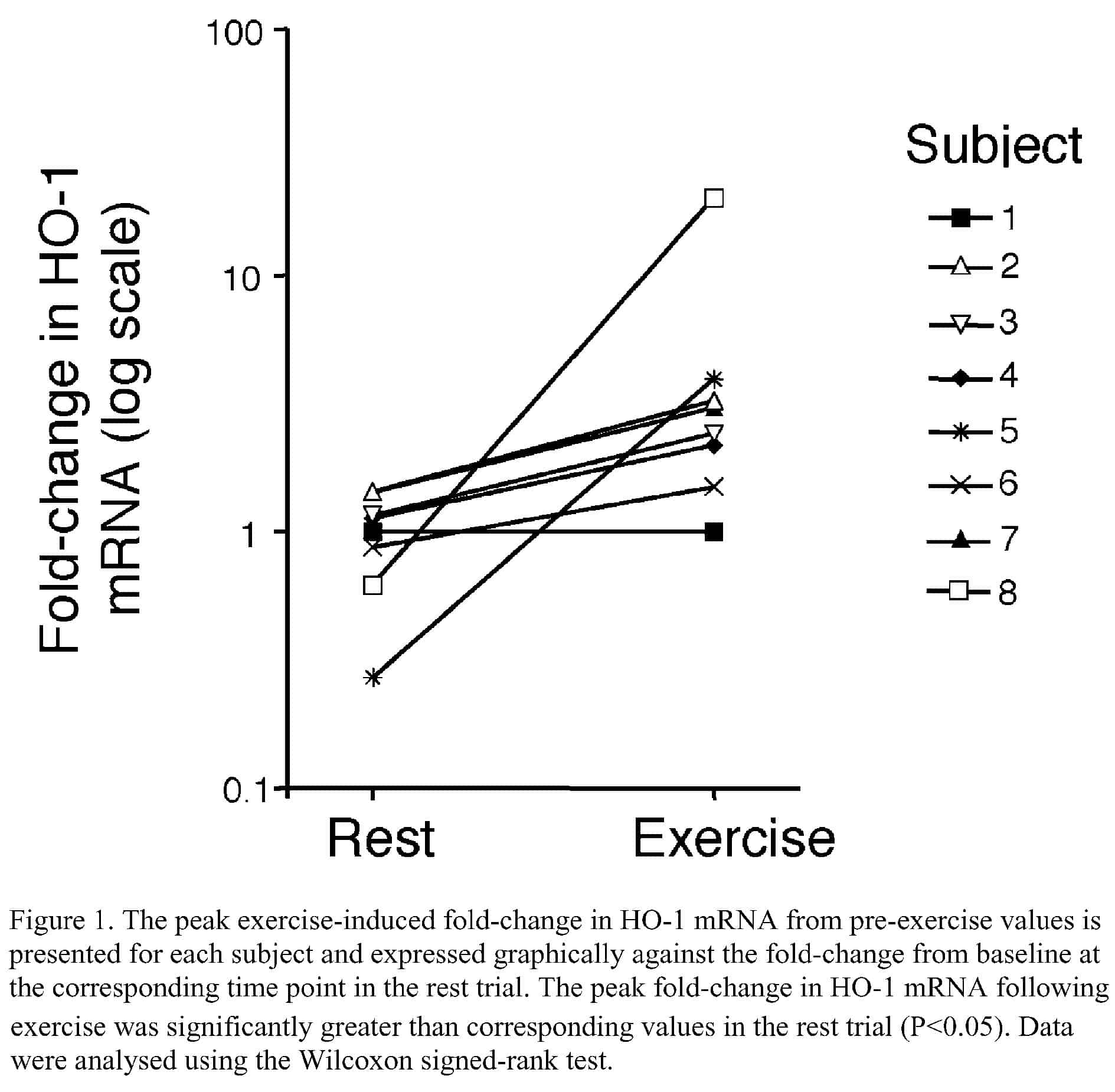Haem oxygenase-1 (HO-1) is an anti-inflammatory and cyto-protective enzyme that is activated by various forms of oxidative stress in a variety of mammalian cells (Applegate et al. 1991). In view of the functional significance of the inducible response (Wagener et al. 2003), HO-1 gene expression is a potentially valuable parameter to exploit as a biomarker of oxidative stress. Given the importance of lymphocytes in immune function and various diseases, we examined whether there was an increase in HO-1 mRNA accumulation in lymphocytes following an acute bout of exercise.
Eight male subjects volunteered to take part in the present study, which had local Ethics Committee approval. Mean ( ± S.E.M.) age, height, body mass and maximal oxygen uptake were 21 ± 1 years, 179 ± 1 cm, 73.9 ± 2.4 kg and 64.4 ± 2.4 ml kg-1 min-1, respectively. Subjects performed an exercise and a rest trial in a randomised order at least 10 days apart. In the exercise trial subjects ran on a level treadmill for 75 min at a speed corresponding to 70 % maximal oxygen uptake, and in the resting trial subjects sat calmly in the laboratory for an equivalent period of time. Lymphocytes were harvested from blood samples taken before and after each trial. Total RNA was isolated and used to determine the fold-change in HO-1 mRNA relative to baseline values using real time reverse transcription-polymerase chain reaction (LightCycler, Roche, Switzerland, UK). HO-1 was normalised to glyceraldehyde-3-phosphate dehydrogenase (GAPDH).
Six of the eight subjects showed an increase in HO-1 mRNA greater than two-fold after exercise (Fig. 1). However, there was considerable variation in terms of the magnitude of this response and the time of peak HO-1 mRNA accumulation. One subject showed a particularly pronounced response with a 20-fold increase above baseline in HO-1 mRNA 24 h post-exercise. HO-1 mRNA in the rest trial did not change over the period of investigation.
These results show that an acute bout of exercise leads to an increase in HO-1 mRNA accumulation in lymphocytes.

